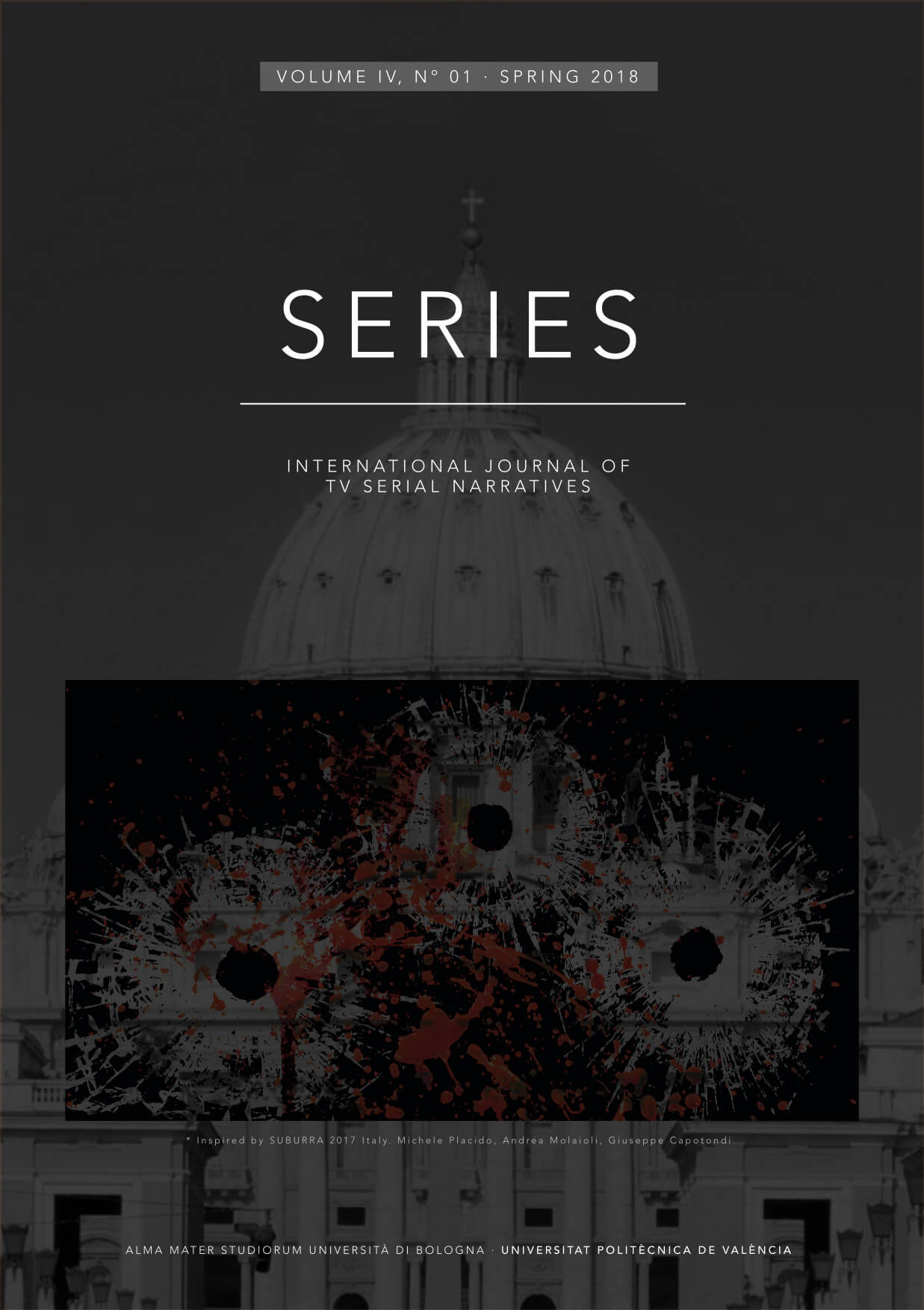Lapis Lazuli. Politics and Aqueous Contingency in the Animation Steven Universe
DOI:
https://doi.org/10.6092/issn.2421-454X/8401Keywords:
Water, Animation, Steven Universe, Eco-Queer Theory, Material FeminismAbstract
Steven Universe (2013-), the North American cartoon produced by Cartoon Network, has been receiving attention from the media, the public and academia for its break with the relative norms of programs directed towards child audiences. It is the first animated series created by a woman (Rebecca Sugar) on Cartoon Network, and one of the first to centralize queer character narratives, breaking gender normative binarism. The present essay analyzes how the series further problematizes the questions of gender and sexuality by breaking with the binary norms related to the separation of nature and culture in Western ontology by means of the character Lapis Lazuli and her hydrokinetic powers. Mapping Lapis Lazuli's operation suggests that water emerges as an anti-colonial, eco-queer and posthumanist element, highlighted by her active power in the constitution of material and identity, breaking the dichotomies from the plurality. Water is the element that unites human and non-human bodies through material affinities, participates in the configurations of difference, and is the constitutive force of local and planetary space, beyond the fundamental contingency in the creation and destruction of ideas, political projects and feelings, furthering a more complex comprehension of its presence in everyday life.References
Alaimo, Stacy (2010). Bodily Natures: Science, Environment and the Material Self. Bloomington and Indianapolis: Indiana University Press.
Asarch, Steven (2016). “‘Steven Universe's Creator Rebecca Sugar on ‘Here Comes a Thought’, dealing with loss and the toxic relationship of Lapis and Jasper”. Player One. Oct. 17 2016. http://www.player.one/steven-universe-creator-rebecca-sugar-here-comes-thought-dealing-loss-and-toxic-563481 (last accessed 29-09-2017).
Badmington, Neil (2004). Alien Chic: Posthumanism and the Other Within. London and New York: Routledge Taylor & Francis Group.
Bakker, Sarah (2015). I’m made of love: An analysis of the censorship of homosexual themes and online response to the French translation of Steven Universe. Bachelor`s monograph. Adelaide: University of South Australia.
Barad, Karen (2003). “Posthumanist Performativity: Toward an Understanding of How Matter Comes to Matter”. Signs: Journal of Women in Culture and Society 28(3): 801-831. DOI: https://doi.org/10.1086/345321
Barad, Karen (2007). Meeting the Universe Halfway: quantum physics and the entanglement of matter and meaning. Durham and London: Duke University Press.
Barad, Karen (2012). “Intra-actions (interview of Karen Barad by Adam Kleinman)”. Mousse Magazine 34: 76-81.
Bennett, Jane (2010). Vibrant Matter: a political ecology of things. Durham and London: Duke University Press.
Biro, Andrew (2013). “River-adaptiveness in a globalized world.” In: Thinking with Water, edited by Cecília Chen, Janine MacLeod, and Astrida Neimanis, 166-84. Montreal & Kingdom/ London/ Ithaca: McGill-Queen's University Press.
Chen, Cecília et al. (eds.) (2013). Thinking with Water. Montreal & Kingdom/ London/ Ithaca: McGill-Queen's University Press, 2013.
Chen, Cecília et al. (2013). “Introduction: Toward a hydrological turn?” In: Thinking with Water, edited by Cecília Chen, Janine MacLeod, and Astrida Neimanis, 3-22. Montreal & Kingdom/ London/ Ithaca: McGill-Queen's University Press.
Chen, Cecília (2013). “Mapping waters: thinking with watery place.” In: Thinking with Water, edited by Cecília Chen, Janine MacLeod, and Astrida Neimanis, 274-98. Montreal & Kingdom/ London/ Ithaca: McGill-Queen's University Press.
Dunn, Eli (2016). “Steven Universe, Fusion Magic, and the Queer Cartoon Carnivalesque”. Gender Forum: an internet journal of gender studies 56: 44-57. http://genderforum.org/transgender-and-the-media-issue-56-2016/ (last accessed 16-09-2017).
Gaard, Greta (2015). “Ecofeminism and climate change”. Women`s Studies International Forum 49: 20-33. DOI: http://dx.doi.org/10.1016/j.wsif.2015.02.004
Grebowicz, Margret and Helen Merrick (2013). Beyond the Cyborg: Adventures with Donna Haraway. New York: Columbia University Press.
Haraway, Donna (1991). Simians, Cyborgs, and Woman: The Reinvention of Nature. New York: Routledge.
Melzer, Patrícia (2006). Alien Constructions: Science Fictions and Feminist Thought. Austin: University of Texas Press.
Merrick, Hellen (2008). “Queering Nature: Close Encounters with the Alien in Ecofeminist Science Fiction”. In: Queer universes sexualities in Science Fiction, Edited by Wendy Gay Pearson, Verônica Hollinger and Joan Gordon. 216-32. Liverpool: Liverpool University Press.
Mortimer-Sandilands, Catriona (2010). “Melancholy Natures, Queer Ecologies”. In: Queer Ecologies: sex, nature and desire, edited by Catriona Mortimer-Sandilands and Bruce Erickson, 331-58. Bloomington and Indianapolis: Indiana University Press.
Mortimer-Sandilands, Catriona, and Bruce Erickson (2010). “Introduction: A genealogy of queer ecologies”. In: Queer Ecologies: sex, nature and desire, edited by Catriona Mortimer-Sandilands and Bruce Erickson, 1-49. Bloomington and Indianapolis: Indiana University Press.
Mortimer-Sandilands, Catriona, and Bruce Erickson (Eds.) (2010) Queer Ecologies: sex, nature and desire. Bloomington and Indianapolis: Indiana University Press.
Neimanis, Astrida (2017). Bodies of Water: posthuman feminist phenomenology. London: Bloomsbury Academic.
Neimanis, Astrida (2013). “Feminist subjectivity, watered”. Feminist Review 103: 23-41. DOI: https://doi.org/10.1057/fr.2012.25
Ottaway, Kat (2016). “Steven Universe: A Queer Television Show Analysis”. Screen Squinty Blog. July142016.https://screensquinty.wordpress.com/2016/07/14/steven-universe-a-queer-television-show-analysis/ (last accessed 23-09-2017).
Pearson, Wendy Gay et al. (2008). “Introduction: Queer Universes”. In: Queer universes sexualities in Science Fiction, edited by Wendy Gay Pearson, Verônica Hollinger, and Joan Gordon. 216-32. Liverpool: Liverpool University Press.
Pearson, Wendy Gay (2008). “Toward a Queer Genealogy of SF”. In: Queer universes sexualities in Science Fiction, edited by Wendy Gay Pearson, Verônica Hollinger, and Joan Gordon. 72-100. Liverpool: Liverpool University Press.
Sbicca, Joshua (2012). “Eco-queer movement(s): challenging heteronormative space through (re) imagining nature and food”. European Journal of Ecopsychology 3: 33-52.
Schwartz, Stuart B (2015). Sea of Storms: A History of Hurricanes in the Greater Caribbean from Columbus to Katrina. Princeton and Oxford: Princeton University Press.
Swyngedouw, Erik (2004). Social power and the urbanization of water: flows of power. New York: Oxford University Press.
Tuana, Nancy (2008). “Viscous Porosity: Witnessing Katrina”. In: Material Feminisms, edited by Stacy Alaimo, and Susan Hekman, 188-213. Bloomington and Indianapolis: Indiana University Press.
Worster, Donald (1985). Rivers of Empire: water, aridity, and the growth of the American West. New York: Pantheon Books.
Downloads
Published
How to Cite
Issue
Section
License
Copyright (c) 2018 André Vasques Vital
Copyrights and publishing rights of all the texts on this journal belong to the respective authors without restrictions.
This journal is licensed under a Creative Commons Attribution 4.0 International License (full legal code).
See also our Open Access Policy.





